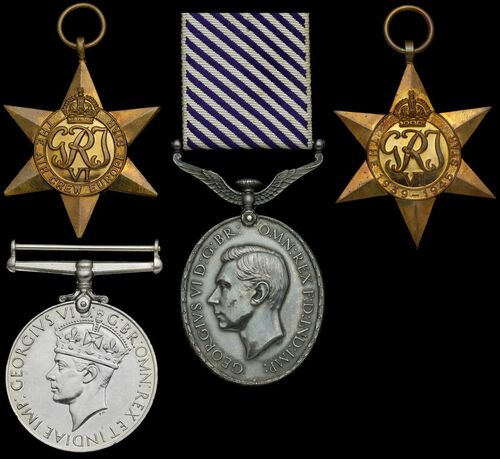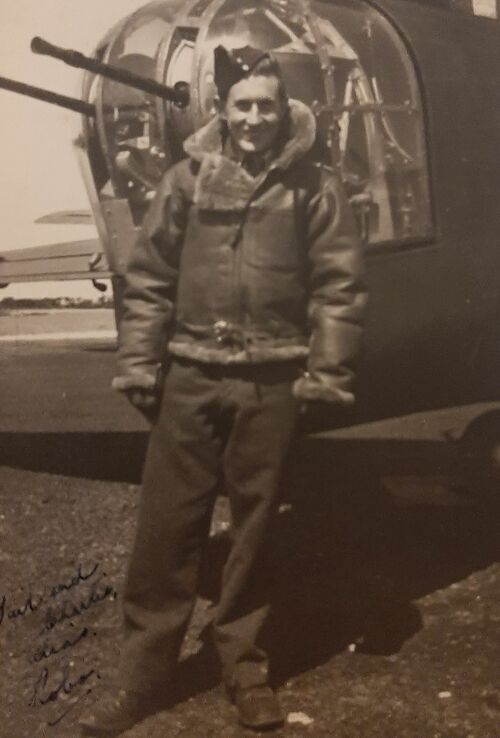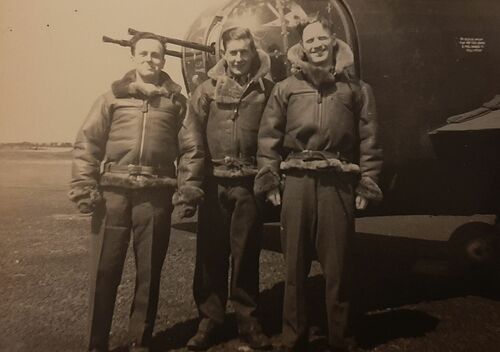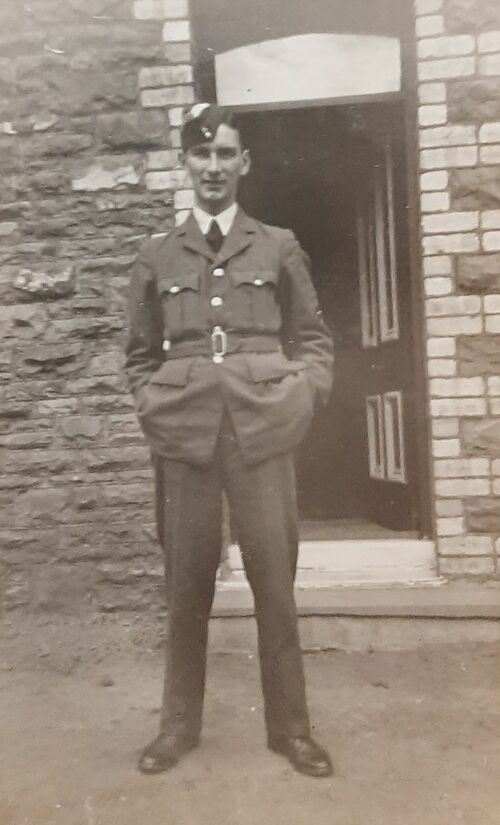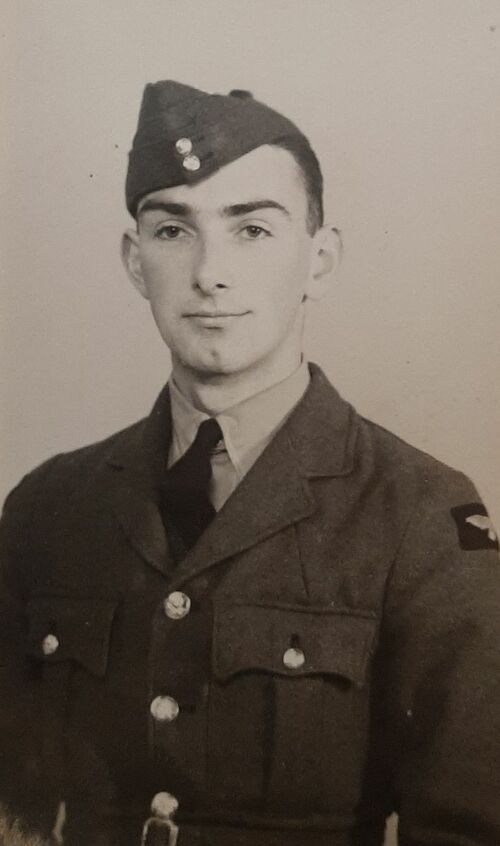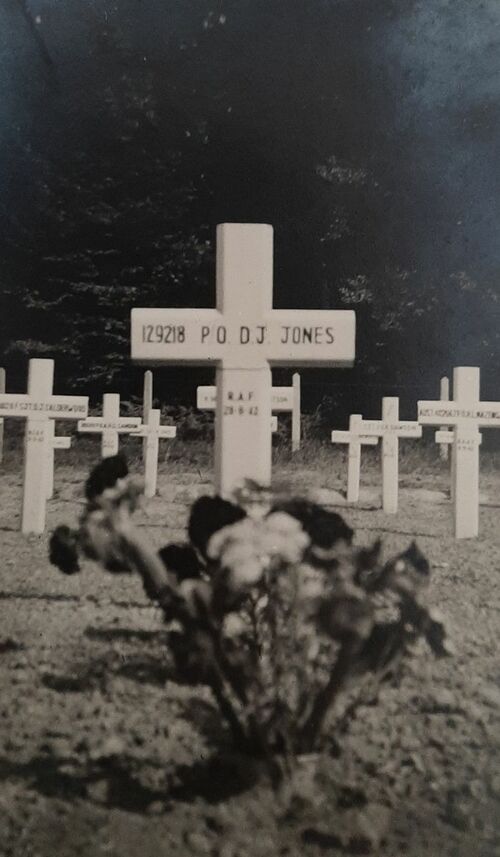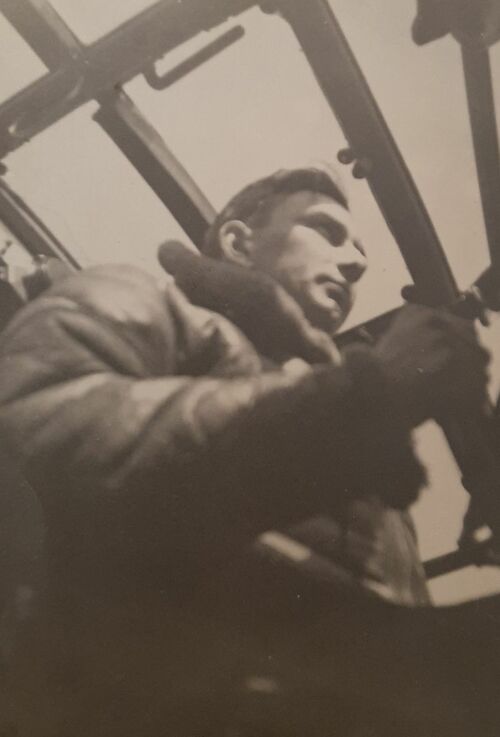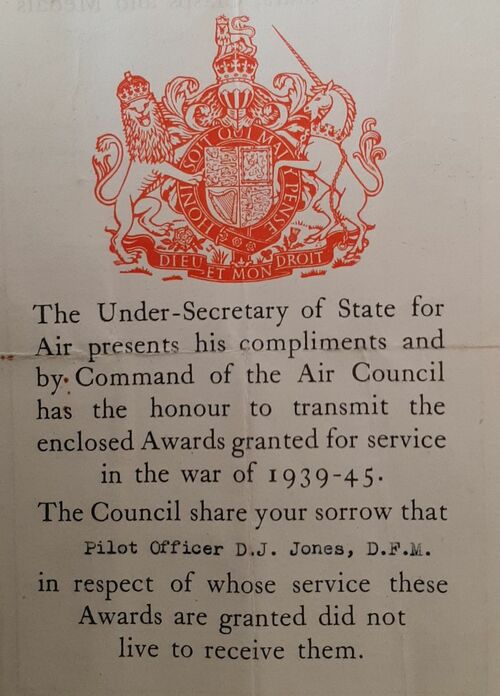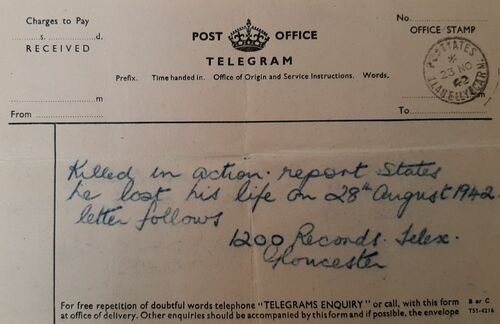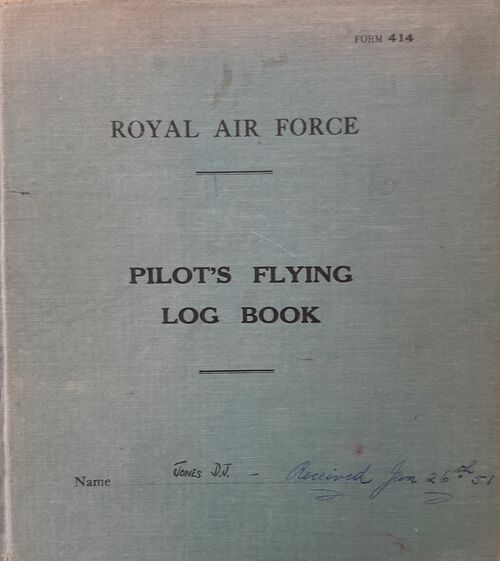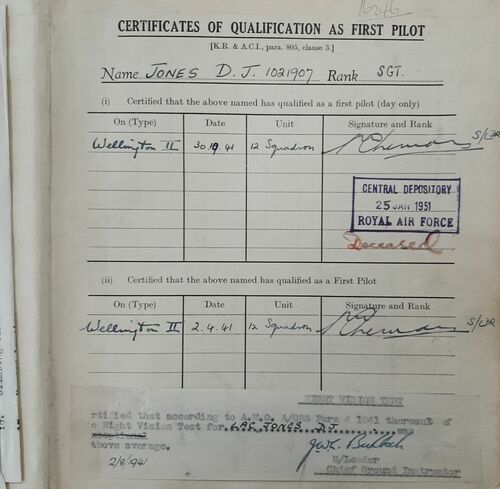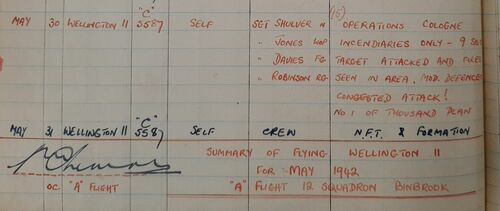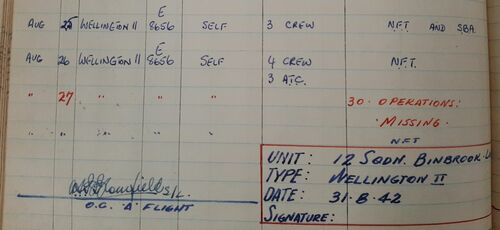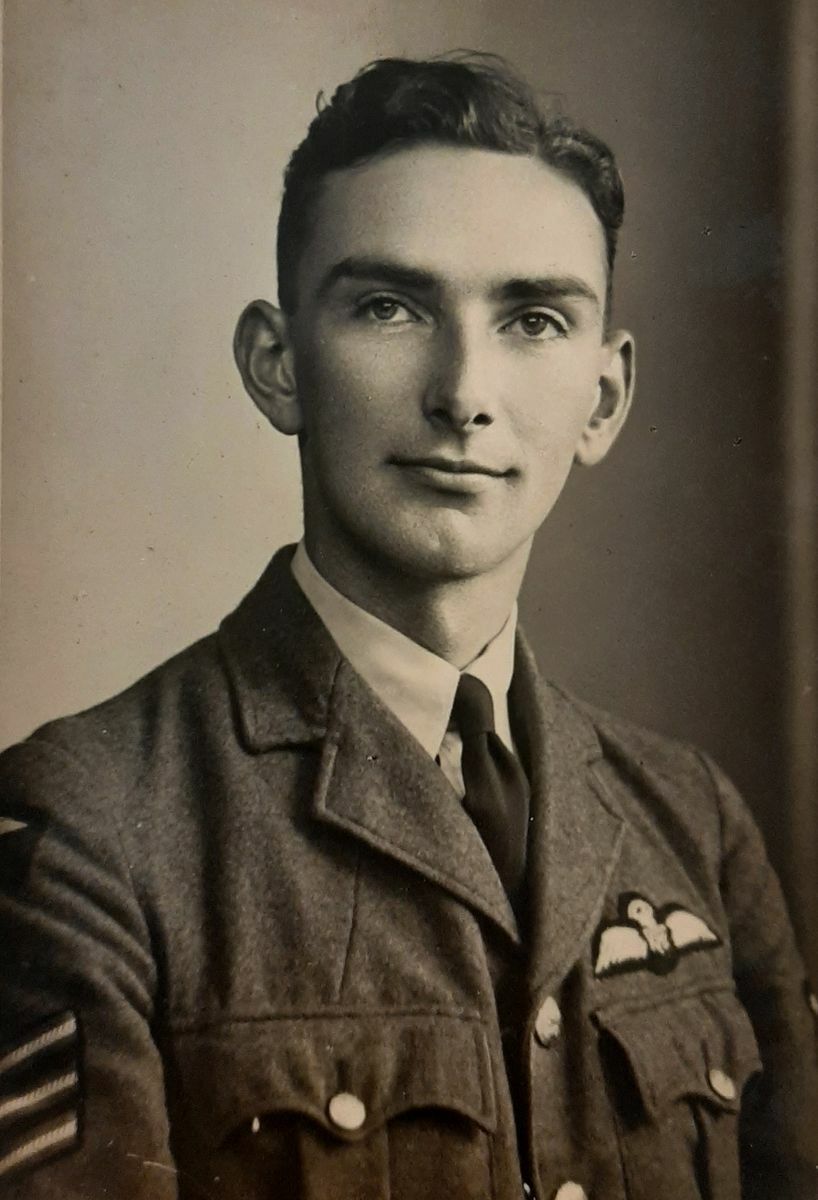Auction: 23111 - Orders, Decorations and Medals - e-Auction
Lot: 956
A daredevil low flying ‘1942’ D.F.M. group of five awarded to Pilot Officer D. J. Jones, Royal Air Force, for his bravery just 400 feet over the defences of Hamburg and the many other raids he participated in over the course of a short but brilliant career cut tragically short on 28 August
Distinguished Flying Medal, G.VI.R. (1021907. Sgt. D. J. Jones. R.A.F.); 1939-45 Star; Air Crew Europe Star; British War Medal 1939-45, sold together with named O.H.M.S. box of issue for the campaign awards, a named box of issue for the D.F.M. and a large archive of original documentation, good very fine (5)
D.F.M. London Gazette 3 April 1945, the original citation states:
‘This captain of aircraft had qualities of gallantry and determination of the highest order and was most efficient and skilful. In May, 1942, Sergeant Jones participated in an attack on Hamburg. After leaving the target, and despite being heavily engaged by the enemy defences, he flew at a low altitude and machine-gunned enemy flak and searchlight positions bringing his aircraft back to base unscathed.’
David John Jones was born at Brynderwen, Pontyates on 31 October 1919 and educated at the Gwynfrym Council School and later attended the Queen Elizabeth Grammar School, Carmarthen. Apprenticed to Frank Bellin & Co. Chemists he worked there for five years, before a trip to Coventry in 1940 when he joined the Royal Air Force as a Pilot. Passing selection at Warrington on 19 September 1940 Jones began his training on 30 September.
Posted to No. 12 Bomber Squadron for active service at R.A.F. Binbrook, Lincolnshire on 18 October, 1941 flying Wellington bombers over Germany. Jones’ first raid was the next year, an operation over Bremen on 11 February 1942 and later in the month an attack on the German naval base at Kiel. Intense flying the next month brought further success with raids over Paris, Kiel and Essen- the latter with the notw that the searchlights over the target were extremely.
Four raids followed in April 1942 including Jones’ first visit to Cologne, he was to return the next month as part of the first 1,000 bomber raid on the city. An article from a local newspaper states: ‘his squadron was first over Cologne during the first 1,000 bomber raid’ despite this Jones still felt that the target area was ‘congested’. That same month also marked his heroics over Hamburg on 3 May when he descended to 400 feet to avoid the heavy air defences and machine gunned the enemy positions on the way past.
Detached from his Squadron the in early June, Jones was posted for paratroop training in Andover. Here he continued to fly Wellingtons with 8 paratroopers aboard. This included mass troop drops with a large formation of bombers and supply container dropping.
Jones returned to Binbrook at the start of July 1942, he was flying again by 13 July over Duisburg where his machine took photographs of their bombs landing to good effect. No. 19 Squadron was also flying ‘Gardening’- Mine Laying- missions at this stage, one mission over La Rochelle on 19 July resulting in Jones’ machine being hit in the port wing by fire from a flack ship. Despite this his gunners managed to shoot out the searchlights on the enemy vessel and Jones nursed the machine back to Manby airfield, landing his damaged aircraft with poor visibility and little fuel. A local newspaper reported on the incident stating:
‘A Wellington bomber attacking a target in Western Germany [SIC] recently was pinned by searchlights, and a heavy A.A. shell exploded to port, breaking a five-foot section off the wing-tip.
The aircraft started to roll, but the pilot got it on to an even keel by sheer strength. He and the second pilot lashed the stick to a strut with a rope. Even then it was a terrific strain to keep the machine flying.
The crew, warned to stand by for baling out, took the risk of the 400-mile homeward run, first over enemy searchlights and guns and then over the sea, where an accident would probably have been fatal.
The Wellington flew home, and made a good landing. Experienced officers, after examining the plane, said it was astonishing that any aircraft could have flown ten miles in such a state.’
As time went on it seems that the heavy casualty rate began to tell on Jones, the comments in his log book became less glib and increasingly notes were made of those of the Squadron who did not return- Wing Commander Collard on 25 July over Duisburg and Alex Holgate on 26 July over Hamburg. The scale of the raids continued to grow as he flew with the Squadron and by the end of his time with them Jones had taken part in three of over 1,000 bombers.
Taking off in Wellington E.8656 on the night of 27 August for a raid over Hamburg, Jones failed to return. Listed initially as missing it was not for some time that he was confirmed to have been killed in action, being hit on the return journey. The report was first made on the German news before being confirmed by the Air Ministry, he and his crew were killed in action on the morning of 28 August. They were buried at Reichswald Forest War Cemetery, Disseldorff, Germany.
At the time of his death Jones had undertaken 30 missions with No. 12 Squadron, he was posthumously promoted to the rank of Pilot Officer. His medal was given to his parents by George VI at an investiture ceremony in Buckingham Palace on 7 May 1946; sold together with a large archive of original material comprising:
i)
Log book dated 27 March 1941-28 August 1942.
ii)
A large number of original photographs and postcards.
iii)
Telegrams, a named medal slip of issue and London Gazette issue.
iv)
Contemporary Citation.
v)
Correspondents relating to the recipient’s schooling.
vi)
Correspondents from the Central Chancellery.
vii)
A memorial service programme.
viii)
A number of newspaper clippings related to the recipient.
ix)
Handwritten, contemporary biography of the recipient.
Subject to 20% VAT on Buyer’s Premium. For more information please view Terms and Conditions for Buyers.
Sold for
£2,600
Starting price
£1100

